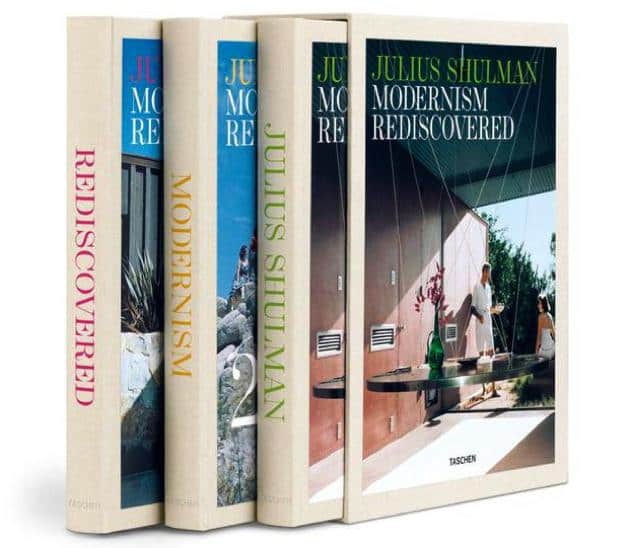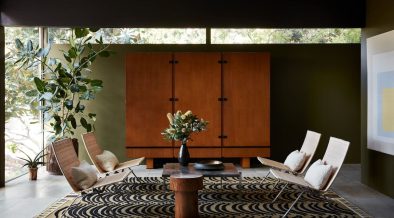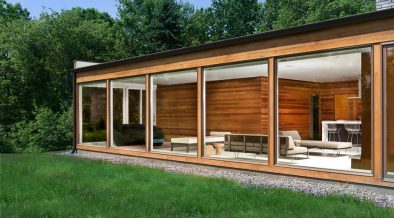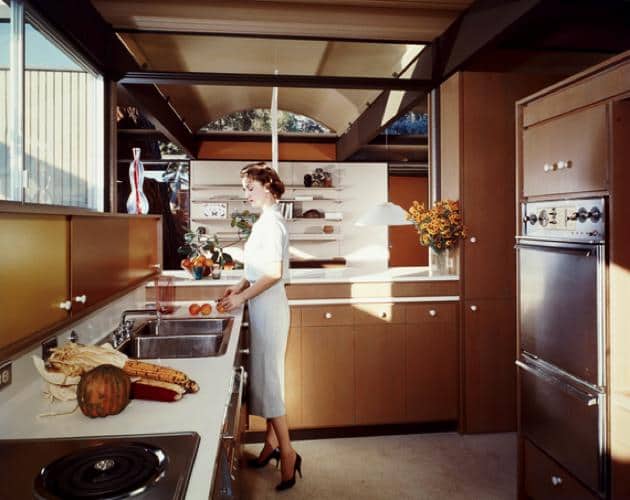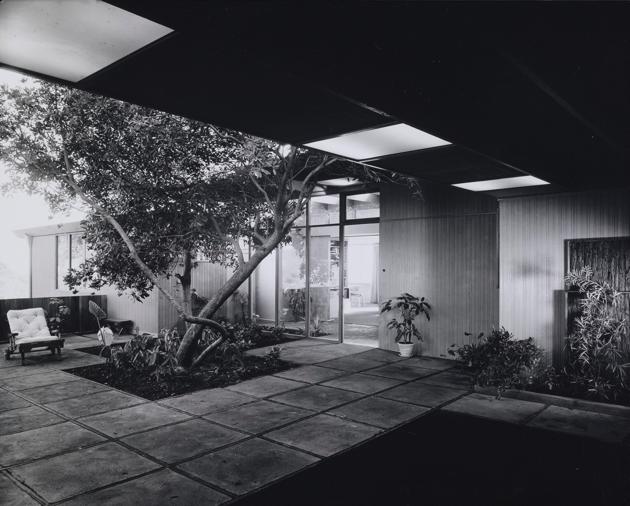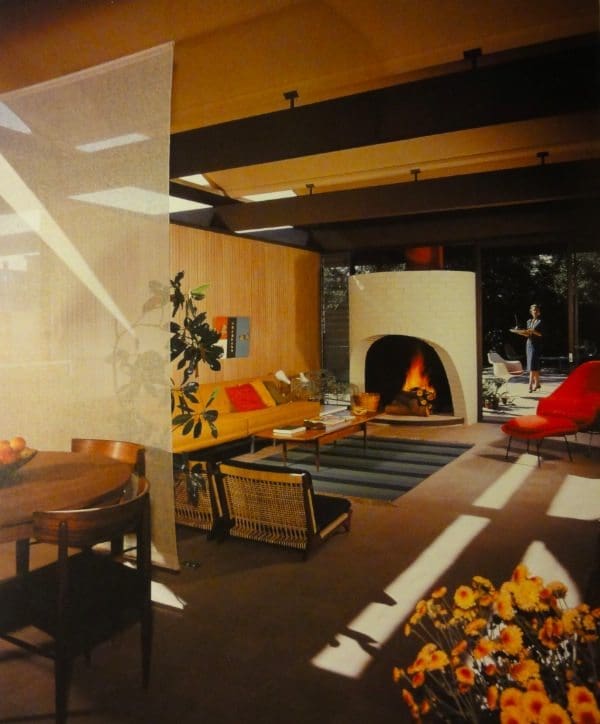[tie_slideshow]
[tie_slide]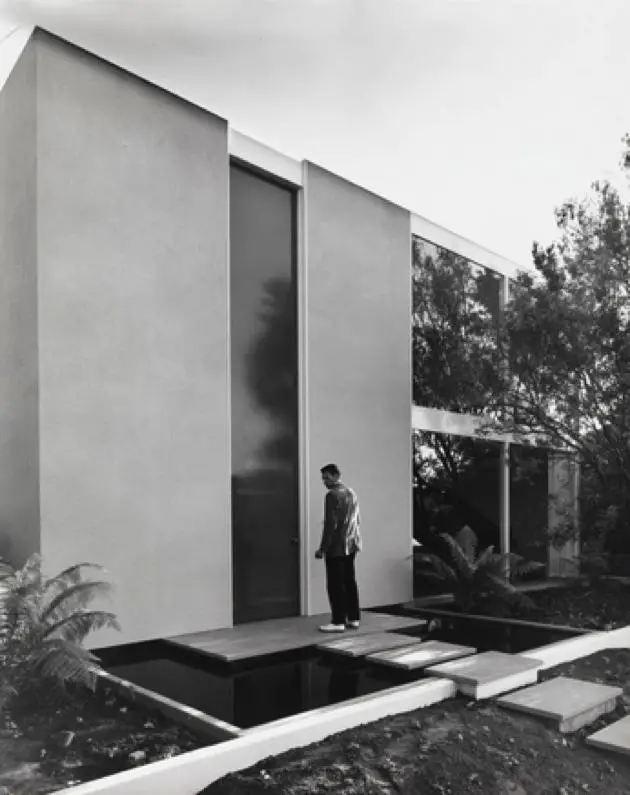
[tie_slide]
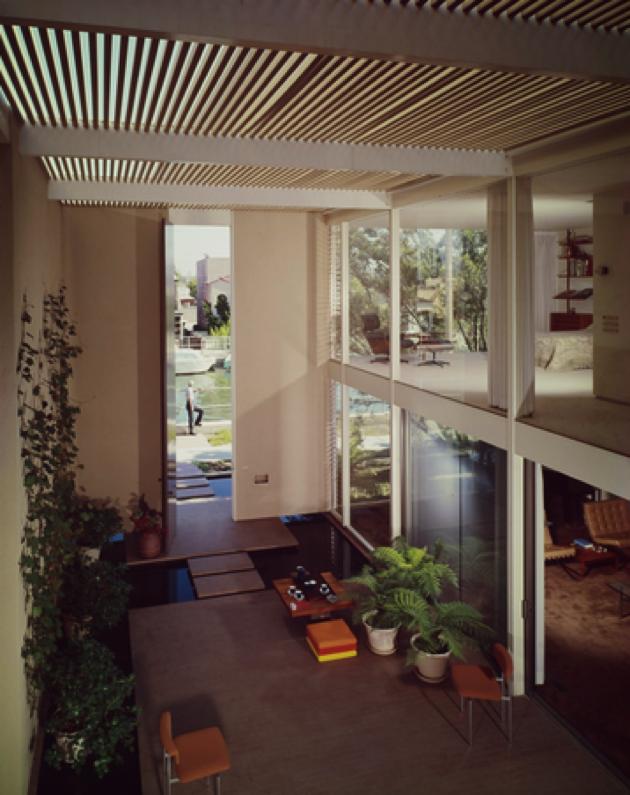 [/tie_slide]
[/tie_slide]
[tie_slide]
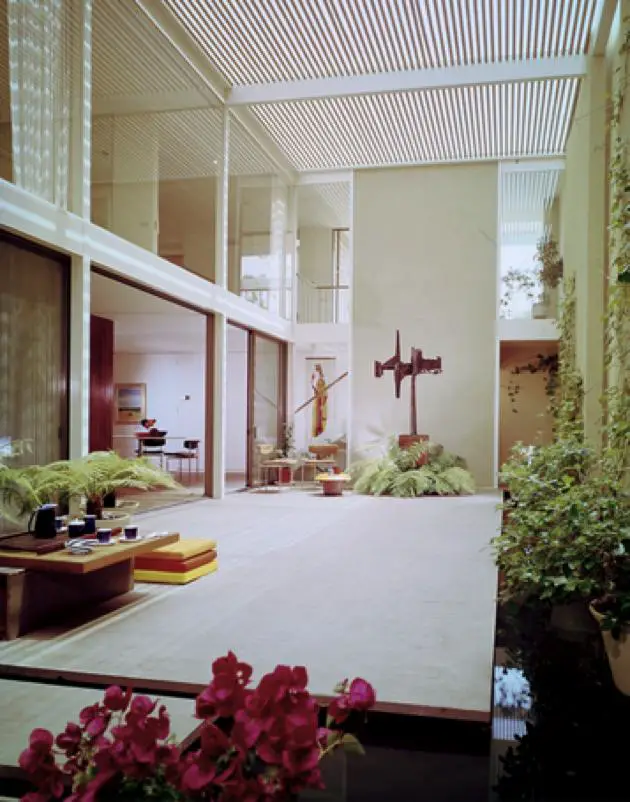 [/tie_slide]
[/tie_slide]
[tie_slide]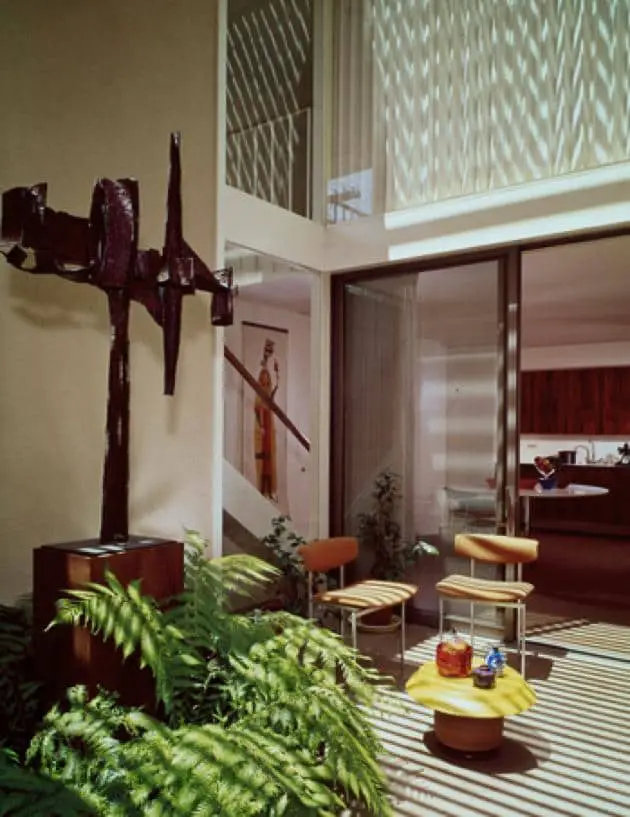 [/tie_slide]
[/tie_slide]
[tie_slide]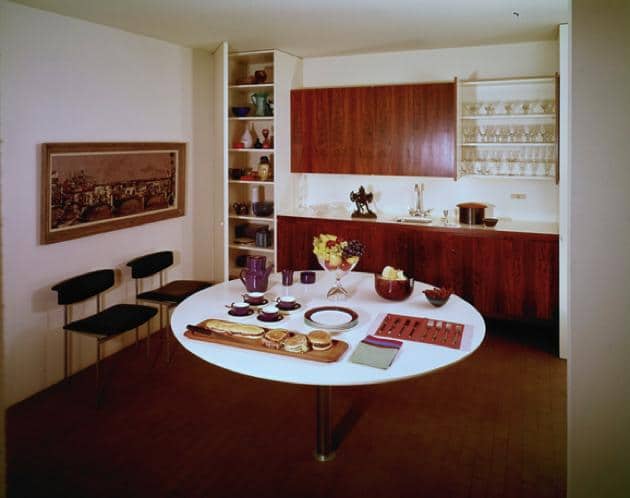 [/tie_slide]
[/tie_slide]
[tie_slide]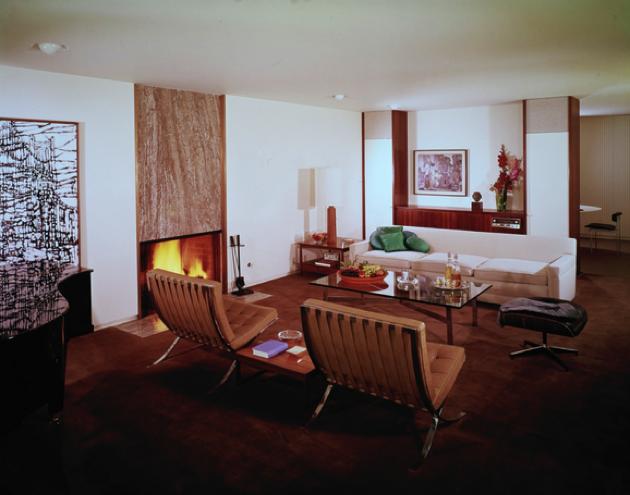 [/tie_slide]
[/tie_slide]
[tie_slide]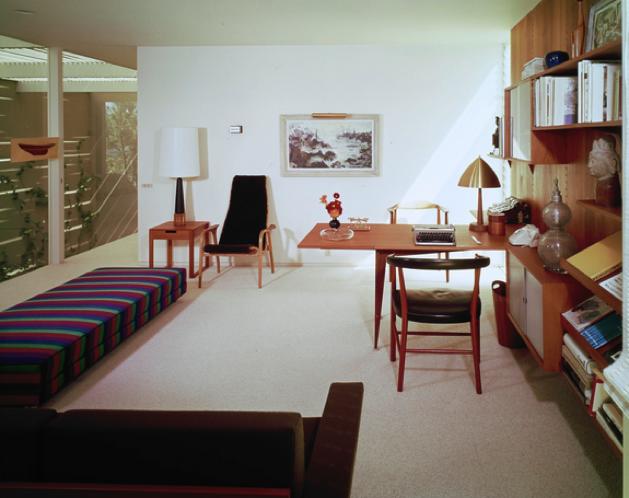 [/tie_slide]
[/tie_slide]
[/tie_slideshow]
Completed in December of 1962, the Case Study House 25 towers above the canal that runs through the Naples section of Long Beach, California, you can glimpse the canal in the background of the photo below. The house, double the height of most others in the area, presents a closed façade to its exterior while intelligently creating its own sense of luxurious space within.
Approaching the house from land, you would be forgiven for harboring doubts as to what could be housed inside the towering, windowless structure that you were now oppressively faced with. Approaching from the canal, however, is an entirely different story.
The Case Study House 25 was designed by architects Killingsworth, Brady and Smith for their client Edward Frank.
Frank was a bachelor who owned the firm Frank Brothers, a company known at the time as one of the most important providers of modern furnishings in Southern California. Frank, who travelled the world extensively, had a keen passion for boating and it would be this character trait that was to be strongly emphasized in the design of his home. Because he believed that most visitors to the home would arrive by boat, the architects situated the main entrance of the house on the canal face of the structure.
Having disembarked from their vessel, visitors would approach the vast property by means of a pathway of steppingstones situated above a reflective pool.
Reaching the house and passing through the 17 foot high front doorway, guests would then be greeted by a luxurious lath-covered, two-story interior courtyard that has views into the adjacent room on the lower level and a bedroom study above. The vast height of the interior, so elegantly punctuated with glass, creates a sense of extravagance and size that is opaquely hidden to the outside world by the house’s blank exterior wall.
The Case Study House 25 consists of a living room, a dining room, a kitchen, a utility room, three bathrooms and three bedrooms. The living room and master bedroom are situated in a way that enables their inhabitants to take full advantage of the view of the canal while another of the rooms serves a dual capacity as a study and a bedroom for guests. It is this dual purpose that serves as the general basis for the entire project.
Designed primarily for a typical family that require privacy and intimacy, the structure also serves as space used for entertaining both formal and informal gatherings and had an intelligent enough layout in order to do so. Seamlessly enabling familial, social and professional activities, the house is an ideal home for a successful business man with family endeavors.
Despite its height, the Case Study House 25 was designed in a compact manner that works to hide the additional, less social interior rooms. The kitchen, dining room, utility room and additional bedrooms are more privately housed alongside the more luxurious rooms that overlook the courtyard. This enabled the inhabitants to retain their privacy while more social or professionally orientated activities took place in the main section of the house.
Whether private, functional or a more socially oriented area of the house, the wooden frames and smoothly plastered services throughout the avant-garde home radiate an air of opulence, drama and relaxed elegance that demonstrates the skill and mastery of Killingsworth, Brady and Smith.
Photos via Modernism Rediscovered.
SEE MORE


